
Hadoop For Dummies
Published by: John Wiley & Sons, Inc., 111 River Street, Hoboken, NJ 07030-5774, www.wiley.com
Copyright 2014 by John Wiley & Sons, Inc., Hoboken, New Jersey
Published simultaneously in Canada
No part of this publication may be reproduced, stored in a retrieval system or transmitted in any form or by any means, electronic, mechanical, photocopying, recording, scanning or otherwise, except as permitted under Sections 107 or 108 of the 1976 United States Copyright Act, without the prior written permission of the Publisher. Requests to the Publisher for permission should be addressed to the Permissions Department, John Wiley & Sons, Inc., 111 River Street, Hoboken, NJ 07030, (201) 748-6011, fax (201) 748-6008, or online at http://www.wiley.com/go/permissions .
Trademarks: Wiley, For Dummies, the Dummies Man logo, Dummies.com, Making Everything Easier, and related trade dress are trademarks or registered trademarks of John Wiley & Sons, Inc. and may not be used without written permission. Hadoop is a registered trademark of the Apache Software Foundation. All other trademarks are the property of their respective owners. John Wiley & Sons, Inc. is not associated with any product or vendor mentioned in this book.
LIMIT OF LIABILITY/DISCLAIMER OF WARRANTY: THE PUBLISHER AND THE AUTHOR MAKE NO REPRESENTATIONS OR WARRANTIES WITH RESPECT TO THE ACCURACY OR COMPLETENESS OF THE CONTENTS OF THIS WORK AND SPECIFICALLY DISCLAIM ALL WARRANTIES, INCLUDING WITHOUT LIMITATION WARRANTIES OF FITNESS FOR A PARTICULAR PURPOSE. NO WARRANTY MAY BE CREATED OR EXTENDED BY SALES OR PROMOTIONAL MATERIALS. THE ADVICE AND STRATEGIES CONTAINED HEREIN MAY NOT BE SUITABLE FOR EVERY SITUATION. THIS WORK IS SOLD WITH THE UNDERSTANDING THAT THE PUBLISHER IS NOT ENGAGED IN RENDERING LEGAL, ACCOUNTING, OR OTHER PROFESSIONAL SERVICES. IF PROFESSIONAL ASSISTANCE IS REQUIRED, THE SERVICES OF A COMPETENT PROFESSIONAL PERSON SHOULD BE SOUGHT. NEITHER THE PUBLISHER NOR THE AUTHOR SHALL BE LIABLE FOR DAMAGES ARISING HEREFROM. THE FACT THAT AN ORGANIZATION OR WEBSITE IS REFERRED TO IN THIS WORK AS A CITATION AND/OR A POTENTIAL SOURCE OF FURTHER INFORMATION DOES NOT MEAN THAT THE AUTHOR OR THE PUBLISHER ENDORSES THE INFORMATION THE ORGANIZATION OR WEBSITE MAY PROVIDE OR RECOMMENDATIONS IT MAY MAKE. FURTHER, READERS SHOULD BE AWARE THAT INTERNET WEBSITES LISTED IN THIS WORK MAY HAVE CHANGED OR DISAPPEARED BETWEEN WHEN THIS WORK WAS WRITTEN AND WHEN IT IS READ.
For general information on our other products and services, please contact our Customer Care Department within the U.S. at 877-762-2974, outside the U.S. at 317-572-3993, or fax 317-572-4002. For technical support, please visit www.wiley.com/techsupport .
Wiley publishes in a variety of print and electronic formats and by print-on-demand. Some material included with standard print versions of this book may not be included in e-books or in print-on-demand. If this book refers to media such as a CD or DVD that is not included in the version you purchased, you may download this material at http://booksupport.wiley.com . For more information about Wiley products, visit www.wiley.com .
Library of Congress Control Number: 2013954209
ISBN: 978-1-118-60755-8 (pbk); ISBN 978-1-118-65220-6 (ebk); ISBN 978-1-118-70503-2 (ebk)
Manufactured in the United States of America
10 9 8 7 6 5 4 3 2 1
Chapter 1
Introducing Hadoop and Seeing What Its Good For
In This Chapter
 Seeing how Hadoop fills a need
Seeing how Hadoop fills a need
 Digging (a bit) into Hadoops history
Digging (a bit) into Hadoops history
 Getting Hadoop for yourself
Getting Hadoop for yourself
 Looking at Hadoop application offerings
Looking at Hadoop application offerings
Organizations are flooded with data. Not only that, but in an era of incredibly cheap storage where everyone and everything are interconnected, the nature of the data were collecting is also changing. For many businesses, their critical data used to be limited to their transactional databases and data warehouses. In these kinds of systems, data was organized into orderly rows and columns, where every byte of information was well understood in terms of its nature and its business value. These databases and warehouses are still extremely important, but businesses are now differentiating themselves by how theyre finding value in the large volumes of data that are not stored in a tidy database.
The variety of data thats available now to organizations is incredible: Internally, you have website clickstream data, typed notes from call center operators, e-mail and instant messaging repositories; externally, open data initiatives from public and private entities have made massive troves of raw data available for analysis. The challenge here is that traditional tools are poorly equipped to deal with the scale and complexity of much of this data. Thats where Hadoop comes in. Its tailor-made to deal with all sorts of messiness. CIOs everywhere have taken notice, and Hadoop is rapidly becoming an established platform in any serious IT department.
This chapter is a newcomers welcome to the wonderful world of Hadoop its design, capabilities, and uses. If youre new to big data, youll also find important background information that applies to Hadoop and other solutions.
Big Data and the Need for Hadoop
Like many buzzwords, what people mean when they say big data is not always clear. This lack of clarity is made worse by IT people trying to attract attention to their own projects by labeling them as big data, even though theres nothing big about them.
Failed attempts at coolness: Naming technologies
The co-opting of the big data label reminds us when Java was first becoming popular in the early 1990s and every IT project had to have Java support or something to do with Java. At the same time, web site application development was becoming popular and Netscape named their scripting language JavaScript, even though it had nothing to do with Java. To this day, people are confused by this shallow naming choice.
At its core, big data is simply a way of describing data problems that are unsolvable using traditional tools. To help understand the nature of big data problems, we like the the three Vs of big data, which are a widely accepted characterization for the factors behind what makes a data challenge big:
- Volume: High volumes of data ranging from dozens of terabytes, and even petabytes.
- Variety: Data thats organized in multiple structures, ranging from raw text (which, from a computers perspective, has little or no discernible structure many people call this unstructured data) to log files (commonly referred to as being semistructured) to data ordered in strongly typed rows and columns (structured data). To make things even more confusing, some data sets even include portions of all three kinds of data. (This is known as multistructured data.)
- Velocity: Data that enters your organization and has some kind of value for a limited window of time a window that usually shuts well before the data has been transformed and loaded into a data warehouse for deeper analysis (for example, financial securities ticker data, which may reveal a buying opportunity, but only for a short while). The higher the volumes of data entering your organization per second, the bigger your velocity challenge.

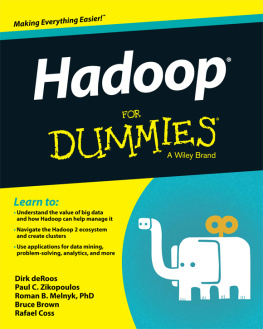

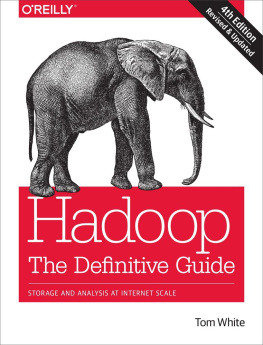
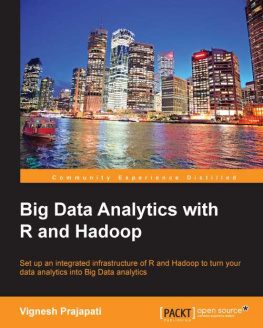

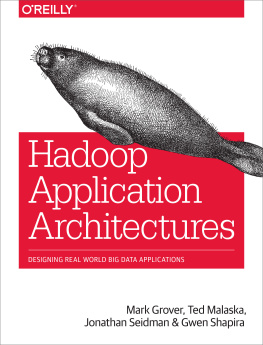
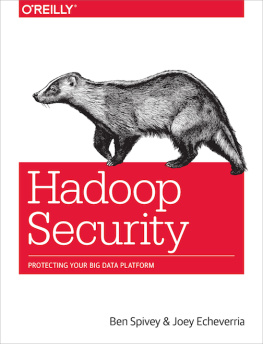
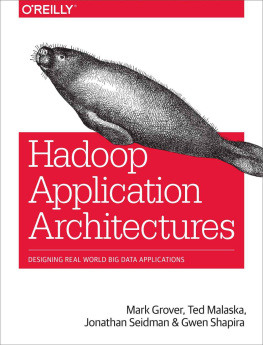

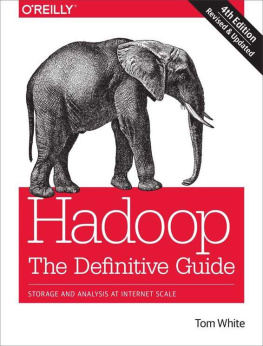


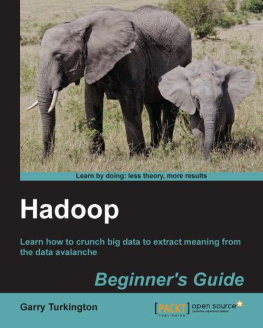

 Seeing how Hadoop fills a need
Seeing how Hadoop fills a need